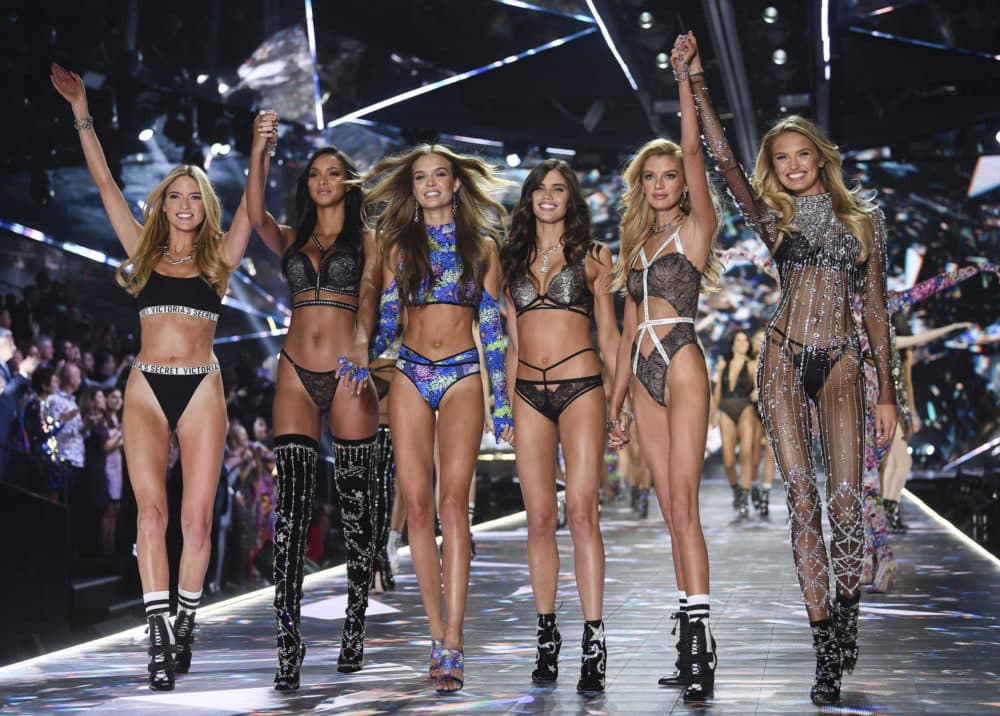Advertisement
Victoria's Secret Models Got Thinner Over 23 Years Of Fashion Show, Study Finds

Cosmetic dermatologist Dr. Neelam Vashi says she is fascinated by women's waist-to-hip ratio, the hourglass curve from the narrowest point of the waist to the widest point of the hips.
She was curious, she says, to see whether previous cross-cultural findings that men tend to prefer women with a 0.7 waist-to-hip ratio would hold true across time in a group known for beauty -- models in the famed Victoria's Secret fashion show.
So Vashi, an assistant professor of dermatology at Boston University and director of the Cosmetic and Laser Center at Boston Medical Center, and colleagues analyzed the measurements of models who walked the runway at the now-defunct fashion show over 23 years, from 1995 to 2018.
She found that the 0.7 ratio — roughly a 24-inch waist divided by 35-inch hips — did hold true for the models, a nice confirmation of her hypothesis.
But the results from other measures the team examined were surprising — and, she says, concerning.
"Overall, these models became slimmer and their dress size decreased," says Vashi. "The ratio stayed the same, but each one of those measurements did decrease."
And as Victoria's Secret models got thinner, the average American woman's measurements grew — with the average woman now at least a size 16.
Concern over that rising disparity comes across in the research paper's title, which begins: "Unattainable Standards of Beauty."
"These findings represent an ideal of beauty that continuously moves further away from the characteristics of the average American woman," says a news release accompanying the study.
Victoria's Secret did not reply to an emailed request for comment. In 2019, with ratings low, Victoria's Secret canceled the fashion show, saying it needed to evolve and be rethought for a new media era.
As a cosmetic dermatologist, Vashi focuses on enhancing people's looks, she says, but she also hopes people recognize that Victoria's Secret models, "have bodies that are just not attainable by an average person."
Though that hasn't stopped some from trying. The study notes a dramatic recent rise in cosmetic surgery, "with buttock and lower body lift [procedures] increasing by 4295% and 256%, respectively, since 2000."
The research relied on a directory of fashion models that did not include weight but did include measurements, and looked at the change over three-year periods starting in 1995 and ending in 2018
The study found that bust measurements dropped from 32.9 inches in the 1990s, to 32 inches 20 years later. Waist size dropped from 24.7 inches to 23.6 inches, and hips shrank from 34.9 inches to 34.4 inches. Average dress size dropped from 5.2 to 3.7. The research also found the models became more racially and ethnically diverse.
"To decrease a dress size from 5.2 to 3.7, that's a significant difference," Vashi says. "To slim an inch off one's waist — that's very hard to do."
But it's not surprising that the models did it, says Jean Fain, a Harvard Medical School-affiliated psychotherapist who specializes in food and body image issues. She says recent pushes for larger models have yielded a few different body types on the runway and in fashion spreads, but, "that was a token thing. It wasn't a real trend."
While it may seem like there's progress toward more realistic norms, she says it's not universal.
"I think it's more like polarities: you have the body-positive movement," Fain says. "And then you have the ardent dieters."
Fain says she sees people spending more time than ever focused on meeting unrealistic beauty standards and lamenting what they eat.
She appreciates the message in the paper's title that the beauty standards set by models are unattainable for most, she says. But it's unlikely to make a difference against the power of the anxiety and self-loathing she sees in people who so want to be thin that they worry about everything they eat.
The only remedy she sees for that is greater compassion, for self and others, Fain says.
